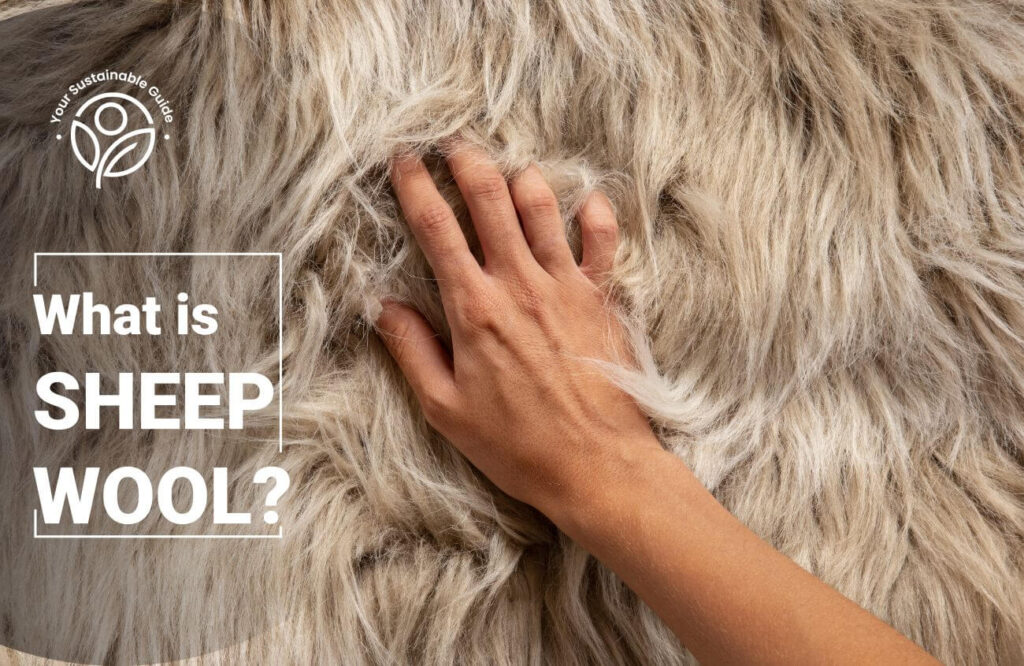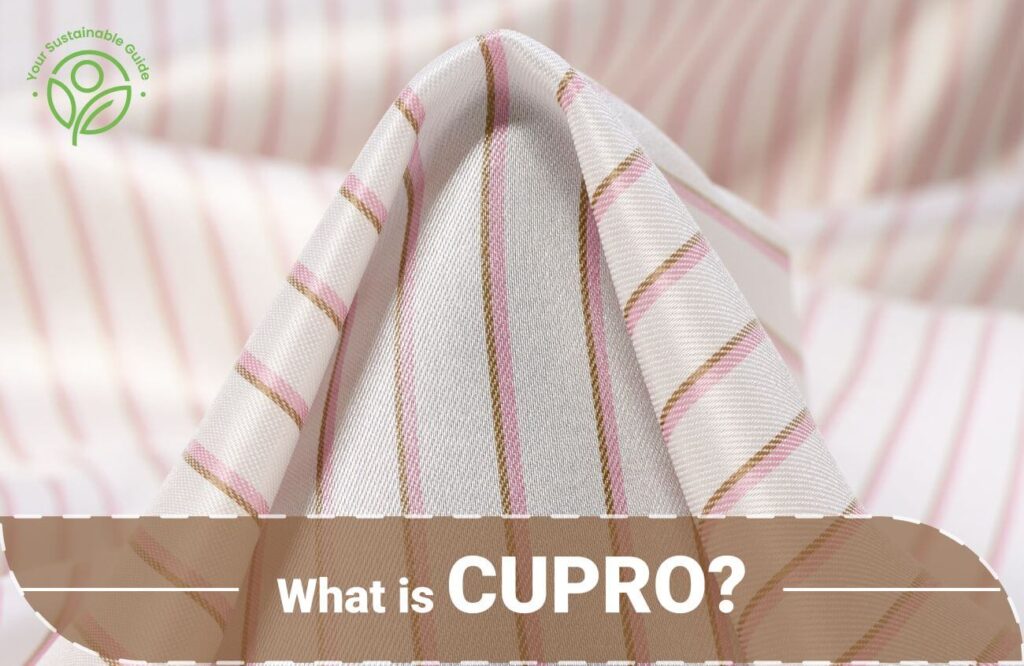Sheep wool is one of the most ancient and natural fabrics used in different parts of the world for various purposes. It is everyone’s go-to fabric as soon as the chilly winters set in. It is also a staple clothing for most people who live in countries with a year-long cold climate. Wool is often considered a sustainable fabric made from natural fibers derived from sheep. Well, who doesn’t own bulky sweaters or cozy shawls made of sheep wool to stay warm as the weather gets chillier?
We often imagine unbound flocks of fluffy sheep happily grazing in vast green fields. But are they content to be shorn off the bulky wool every year? Do we even have the faintest idea of what is actually happening in the wool industry? Sheep wool production does come with its own set of environmental and ethical issues. Let us find out whether our favorite woolens are really sustainable and cruelty-free. After all, animal welfare may be one of the rare priorities for sheep breeding farms.
- What is Sheep Wool?
- How is Sheep Wool Harvested?
- Is Sheep Wool Sustainable?
- Is Sheep Wool Ethical?
- Is Sheep Wool Cruelty-Free?
- Is Sheep Wool Affordable?
- Sheep Wool Certifications
- Properties of Sheep Wool
- Pros & Cons of Sheep Wool
- Uses of Sheep Wool
- How to Care for Sheep Wool
- Famous Brands That Use Sheep Wool
- Best Alternatives to Sheep Wool
- Wool Festivals
- Fun Trivia
- Conclusion
What is Sheep Wool?
Sheep wool is a natural protein fiber obtained from sheep. This breathable fleece has amazing strength. It has natural insulative effects to keep the sheep warm throughout the winter. It is fully biodegradable and a renewable resource.
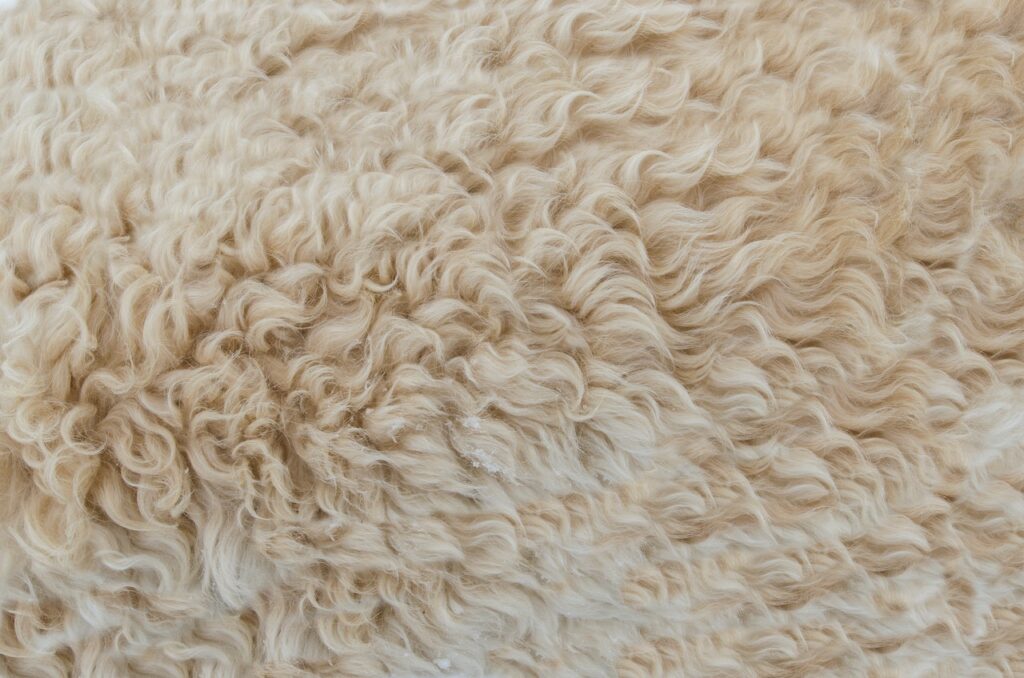
Before sheep were domesticated, their fiber used to be hairier than wooly in texture. That quality of hair was not very useful as a textile material. Crossbreeding or selective breeding started after Sheep were domesticated around 10,000 years ago. Here, certain valuable traits in different flocks of sheep were selected and then bred to make the crossbreed sheep woolier.
Archeological evidence suggests that in 10,000 BC, people in West Asia (Mesopotamia) first started domesticating sheep for their warm hair-like fiber and meat. Selective breeding of sheep started sometime in 6000 BC in Iran. Garments woven from sheep wool started to appear first in around 4000 BC. Yet, there’s every chance that primitive humans started making woolen garments about 8,000 years ago. Wooly sheep were first brought to Europe in 4000 BC. During the medieval period, England, Spain, and Italy became prominent producers and exporters, with many thriving wool industries.
At present, there exist over 200 breeds of sheep worldwide, with one sheep producing anywhere between 3 to 30 pounds of wool annually. While some are raised primarily for the finest quality of textile use yarn, others are bred to yield wool and meat of standard quality.
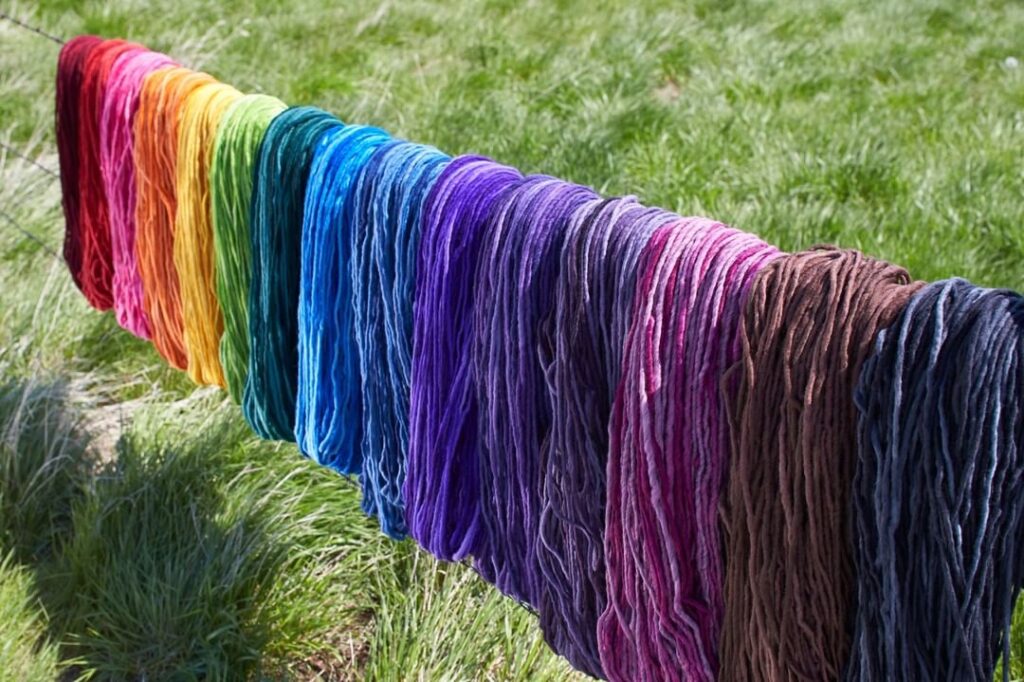
Currently, Australia is the largest producer of wool, producing approximately 25% of the world’s wool, followed by China in the second position with 18%. Apart from sheep, wool also comes from alpacas, llamas, vicunas, goats, musk oxen, yaks, etc. followed by China in the second position with 18%.
How is Sheep Wool Harvested?
The sheep wool harvest starts with categorizing the sheep according to the kind of fleece they produce. While some sheep are shorn once a year, others can be shorn twice or thrice yearly, depending on the growth and quality.
For example, Lambswool is the wool obtained at the first shearing of a sheep (still considered a lamb) after six months. Whereas, Yearling wool is obtained in the second shearing, that is, after 10 to 12 months. Virgin wool is the wool shorn from a healthy grown sheep and wool extracted from sheep that have died of natural causes is called Fallen wool. All these different wool categories are sorted and graded according to their texture, quality, length, and color.
How is Sheep Wool Yarn Made?
The sheep wool harvest starts with categorizing the sheep according to the kind of fleece they produce. While some sheep are shorn once a year, others can be shorn twice or thrice yearly, depending on the growth and quality.
For example, Lambswool is the wool obtained at the first shearing of a sheep (still considered a lamb) after six months. Whereas, Yearling wool is obtained in the second shearing, that is, after 10 to 12 months. Virgin wool is the wool shorn from a healthy grown sheep and wool extracted from sheep that have died of natural causes is called Fallen wool. All these different wool categories are sorted and graded according to their texture, quality, length, and color.
Next, the wool is cleaned of impurities and lanolin (the greasy substance naturally found in wool) through mild chemical catalysts, naturally dried, and carded (combed) to get long, thin strands, which are then spun into yarn. The yarn goes through another step of cleaning and is finally ready to use. The fibers may be dyed at this point, but they can also be dyed after spinning or weaving.
Is Sheep Wool Sustainable?
Sheep wool is a natural fiber that is biodegradable and renewable. Sure, we get it! But is that all it takes for a fabric/fiber to be sustainable? Because a considerable portion of woolen products is labeled as ‘Superwash’, meaning that they were chemically treated so that they can be easily machine-washed. In this case, where wool gets mixed with synthetic chemicals, it loses its biodegradable property.

Sheep wool is obtained from domesticated sheep, and almost 98% of the world’s sheep population is tamed, significantly impacting the environment. Sheep are ruminants, which means they have a specialized digestive process, and for this same reason, they are biologically bound to release methane gas. The global warming capacity of methane gas is 21 times of carbon dioxide! So more or less, about 50% of wool’s carbon footprint is released from the sheep themselves.
Increasing flock sizes are a primary concern of environmental organizations because they cause overgrazing, biodiversity loss, and soil degradation. However, we also can acknowledge that sheep can be raised on rough terrains and uncultivated land. Other fabrics release far more disastrous levels of carbon emissions and consume high energy production processes compared to wool.
Is Sheep Wool Ethical?
In order, to promote animal welfare in the sheep wool industry, a lot of certifications for sustainable and ethical wool have been introduced. However, all these practices do not fully guarantee of only clean and cruelty-free practices involved in wool harvesting and sheep rearing.
Originally when sheep roamed around in the wild, their coats were much thinner that used to shed and grow as per weather demands but after domestication and selective breeding, sheep are made to grow only thick coats of wool that do not shed naturally and will kill the sheep if not shorn upon reaching a considerable growth.
Today with almost 98% of the world’s sheep population being domesticated, leaving them without shearing their fleece would be nothing but another form of animal cruelty. But then again, shearing of wool is a stressful time for the sheep and they go through a lot of abuse in case of refraining to be sheared.
Is Sheep Wool Cruelty-Free?
No, sheep wool is not cruelty-free. Wool harvesting involves a lot of inhumane practices because all the wool producers care about is filling their pockets with massive profits by generating more and more wool year after year.

Shearing is a process that the sheep are not naturally used to going through. From kicking and punching to getting knocked off, Sheep are often subjected to rampant abuse. Because of immense stress, they try to block the shearing process. Shearers do everything to gain the maximum amount of wool in the least possible time. They have the least bit of regard for the sheep’s well-being and are only concerned by the amount of wool shorn at the end of the day.
In most cases, wounded sheep never receive any medical attention and in the case of larger and more critical wounds, they often get infected and die. Sheep are usually kept in cramped conditions and older sheep are regularly slaughtered once they stop producing quality wool. Lambs go through mulesing, tail docking, castration, and other painful practices at a tender age to produce the finest quality of wool. PETA has long criticized the wool industry and released a video in 2018, showcasing all the wrongful abuse they have been subjecting to the sheep.
So the wool industry is not completely cruelty-free but there are ethical breeders who really care for their livestock and abide by all animal welfare practices to produce clean, blood-free wool.
Is Sheep Wool Affordable?
Sheep wool is costlier than cotton, which stands to be its main competitor in natural fabrics. But it is affordable if compared to other natural wool fibers like alpaca wool, cashmere, mohair, and merino wool because these wool-bearing animals are not raised as widely as sheep, hence limiting the supply. Plus the wool produced by these animals is of far superior quality if compared to sheep wool.

Sheep wool is also more expensive than other synthetic fabrics. Australian Wool Innovation Limited is an organization you can easily check out to know about current wool rates as they provide weekly reports for wool prices per kilogram.
Sheep Wool Certifications
To get your hands on clean, abuse-free, and sustainable sheep wool, you can check out the following certifications:
- Responsible Wool Standard (RWS)
- International Wool Textile Organization (IWTO)
- Woolmark
- Certified Organic Wool
- Soil Association Organic Standard
Properties of Sheep Wool
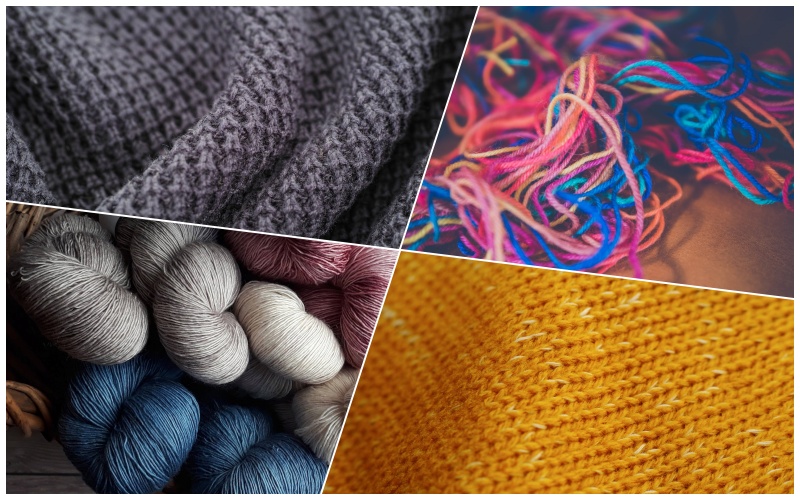
- Sheep wool is biodegradable and compostable.
- It is quite durable and can be bent up to 20,000 times without showing any signs of strain.
- Sheep wool has high thermal insulation that provides great warmth.
- It is flame-resistant.
- Sheep wool is soft and breathable.
- It has moisture-wicking quality and can absorb up to 30% more water than its weight.
- Sheep wool is stain-resistant.
- It is anti-static and wrinkle-resistant.
- The finest quality soft sheep wool is hypoallergenic.
- Sheep wool has lanolin naturally, making it antibacterial and a strong repellant to mildew and molds.
- Garments made from sheep wool fibers don’t need to be washed frequently as sheep wool is odor-resistant.
- Sheep wool has a natural crimp.
- Woolen clothes made from thin wool fibers can also be used in summer. The breathable air pockets in wool absorb sweat and don’t let it weigh down insulation layers.
Pros & Cons of Sheep Wool
Pros of Sheep Wool:
- Sheep wool is completely natural fiber, making it 100% biodegradable.
- It is anti-static and flame-retardant.
- Sheep wool is highly durable, resilient, and long-lasting.
- It has good thermal insulation properties. The tiny holes between the wool fibers trap bubbles of air which heat up as the moisture in the center of the thread heats up.
- Sheep wool is breathable and regulates humidity.
- It is odor-resistant and stain-resistant.
- Sheep wool has a cozy and comfy feel.
- It has good moisture absorption properties.
- Sheep wool is easy to care for and doesn’t need regular washing.
- Sheep wool not only keeps you warm in winters but also keeps you cool in summers. The coil-like shape of wool drives out excess heat from your skin and helps regulate body heat.
- Sheep wool is affordable compared to wool derived from alpacas, vicunas, llamas, merino sheep, etc.
Cons of Sheep Wool:
- Chemically treated sheep wool loses its biodegradable quality.
- Sheep wool is vulnerable to insect attacks like moths.
- Sheep wool is usually bulky.
- The finest quality sheep wool or lambswool products are hypoallergenic but a major portion of sheep wool remains to be allergic, hence it is not suitable for all skin types. For this itchy property, usually, outerwear is made out of sheep wool as they do not remain in contact with the skin directly.
- The sheep wool industry is engaged in cruelty and other animal abusive practices.
- Once sheep stop producing quality wool, they are slaughtered without any second thought for their meat.
- Overpopulation of domesticated sheep leads to drastic environmental impacts like overgrazing, soil erosion, methane gas emission, etc.
Uses of Sheep Wool
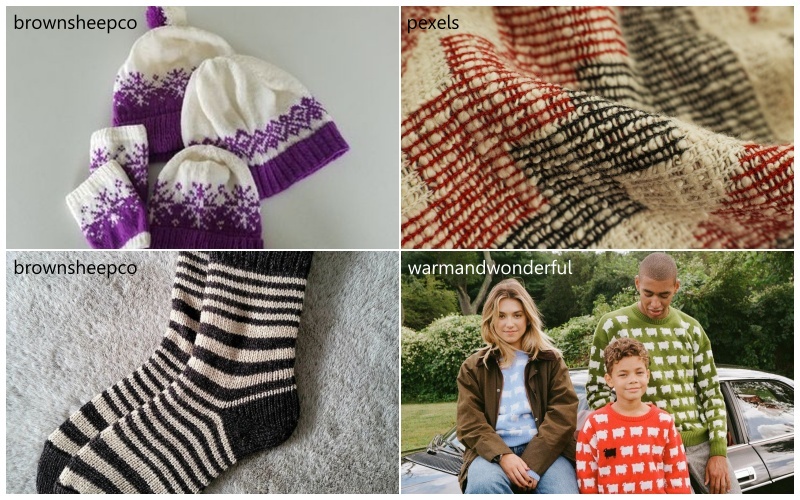
- Fine quality sheep wool is used for making different types of winter clothing and accessories like sweaters, shawls, cardigans, blazers, formal suits, scarves, socks, mittens, gloves, beanies, etc.
- Coarse-quality of sheep wool is often used in making carpets, rugs, throws, slippers, etc.
- Sheep wool is also in making blankets, upholstery, bedding, etc.
How to Care for Sheep Wool
- Always check the label of your sheep wool garment for specific wash and care instructions.
- Air-dry your woolen after every wear to keep them fresh and odor free.
- In the case of machine wash, turn your woolens inside out and wash them in a wool setting only in cold water.
- Always use a wool-specific laundry detergent to wash your sheep wool garments.
- Stains and spots should be treated immediately.
- You can also hand-wash sheep wool clothing in cold water and a mild wool-specific detergent.
- Always wash light-colored woolens and dark-colored woolens separately.
Famous Brands That Use Sheep Wool
Best Alternatives to Sheep Wool
Organic Hemp- Organic hemp is a sustainable and ethical alternative to wool. It is breathable, antimicrobial, has a certain natural warmth, and is hypoallergenic, making it perfect for your base layers as this fabric is soft to the skin and doesn’t have any itch, unlike sheep wool. Plus, it’s cruelty-free and vegan.
Recycled Wool- Sheep wool is recyclable in nature and worn-out woolen clothing are easily recycled in a closed-loop process where the garment is returned to its raw fiber state and converted to yarn again, ready to be used in weaving fresh woolen clothing. In this way, we circulate what already exists, curbing the need for virgin wool.
Woocoa- Woocoa is the latest development in ethical and cruelty-free vegan fabrics. Made from coconut, hemp, or medicinal marijuana waste, Woocoa is antimicrobial, naturally thermal, durable and a high-quality woolen fabric that doesn’t need a single sheep to be shorn. Woocoa was brought to life by the compassionate students of Universidad de los Andes in Bogotá, Colombia, and has won PETA Prize for Animal-Free Wool.
Wool Festivals
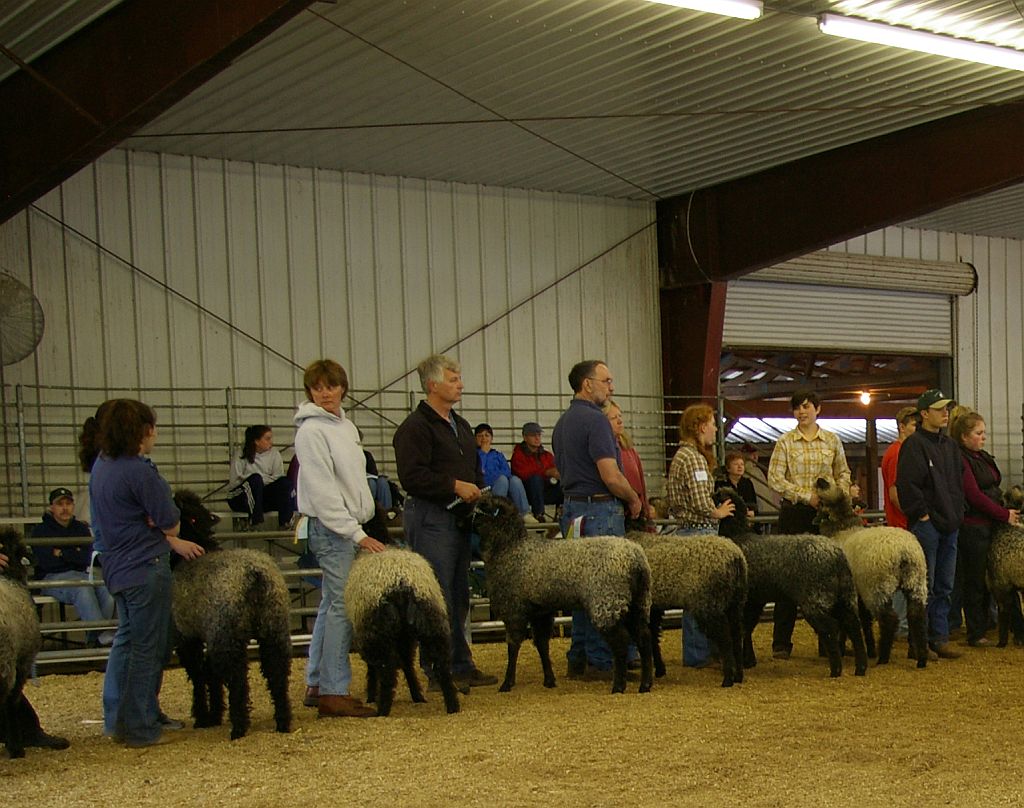
Maryland Sheep and Wool Festival- The Maryland Sheep Breeders Association organizes the Maryland Sheep and Wool Festival every year in May. Held in Howard County, the festival promotes sheep breeding and wool production. It is one of the largest festivals celebrating everything ‘sheep’ and brings together over 250 vendors, 600 sheep, and 40+ workshops. 2023 will mark the 50th year of the festival, hence it’s gonna be a lot more exciting and definitely an experience of a lifetime.
New York State Sheep and Wool Festival- The New York sheep and wool festival also known as the Rhinebeck sheep and wool festival is an annual gathering that brings together wool and fiber enthusiasts, houses about 300+ vendors, and showcases the thriving sheep and wool industry in the US. Held in October every year in Rhinebeck, New York, the festival marked its 50th year in 2022.
Wisconsin Sheep and Wool Festival- The Wisconsin sheep and wool festival is held every September in Jefferson, USA. The festival focuses on educating its audience about animal fibers, ethical sheep rearing, age-old shearing methods, etc. With a variety of youth activities, sheep shows, auctions, and competitions, the festival is a must-visit where you are sure to have a gala time with friends and family while exploring everything ‘Baaa’.
Source: warmandwonderful/Instagram
Fun Trivia
- Use of sheep in popular video games- Minecraft, Sheep A Sheep, Cult Of The Lamb, Sheep On Steam, Clouds and Sheep, etc.
- Some popular idioms/phrases on sheep- Black sheep in the family, Count your sheep before you sleep, A wolf in sheep’s clothing, Cast a sheep’s eye, The black sheep, As gentle as a lamb, etc.
- Poems on sheep- Baa Baa black sheep, The Shepherd, Mary had a little lamb, The Lamb-Child, Little Bo-peep, The Sheep, The Desert Flock, Sheep and Lambs, The Good Shepherd, etc.
Conclusion
Let’s face it, no matter the biodegradability, recyclability, and renewable features, the sheep wool industry is rather an unkind industry, not only to the animals but to the planet as a whole. However, ethical wool does exist. Of course, they are more expensive, and why not? After all, sustainably raising sheep, and keeping a check on all animal welfare policies does exhaust an ethical breeder’s pocket.
As conscious consumers and advocates of slow & sustainable fashion, we have the power to choose right by checking for certifications and standards to ensure that our wool doesn’t come from farms that abuse and murder these innocent beings. Also taking good care of our woolen garments to give them an extended life and buying other vegan alternatives of wool also help the good cause to a great extent.

